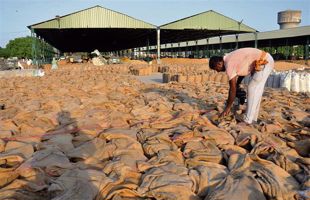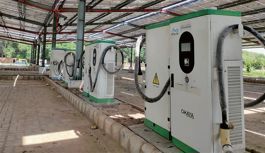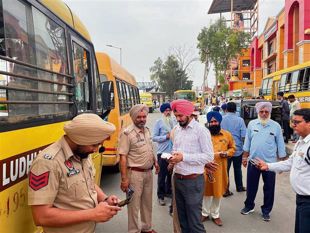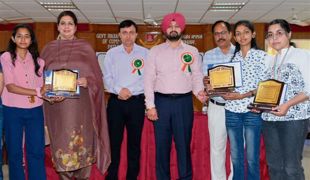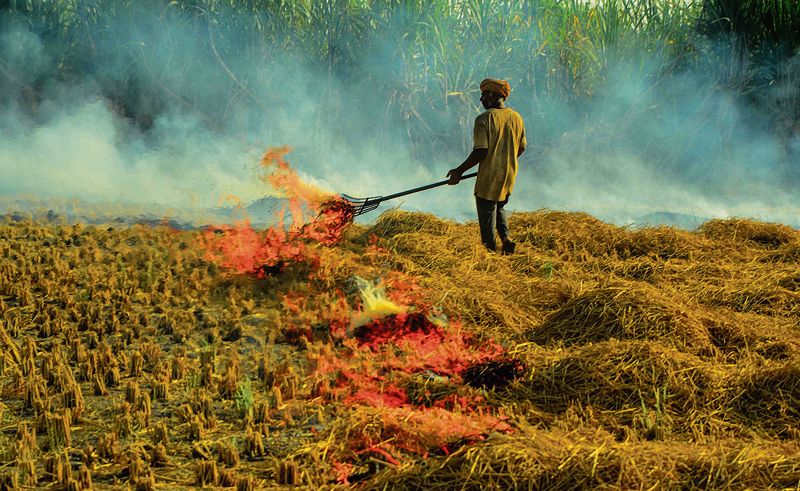
Outdated: Burning of crop stubble doesn’t deserve to continue as a time-honoured tradition of the annadata. PTI
TK Arun
Senior Journalist
SENIOR officials of the government are certainly very different from quantum particles. Yet, both have a common quality: their state changes when they are observed — the very act of observation induces the change. Now that the Supreme Court has ordered the authorities of north Indian states to put an end to stubble burning, leaving it to them to figure out how, we can expect to see some action. Here are a few suggestions as to how to act on the court directive without creating a conflict with farmers, who need to clear their fields of the crop residue in order to plant the next crop.
There is an opportunity for political and administrative leaders of Punjab today to become agents of change.
Four South Asian cities — Lahore, Delhi, Mumbai and Dhaka — figure among the five most polluted cities of the world. The practice of burning the stubble that remains in the fields after the sheaves of grain have been cut off from the plant, an agricultural practice on either side of the India-Pakistan border, is an oft-reviled culprit. In reality, it accounts for a maximum of 40 per cent of the concentration of fine soot in the air. A weather formation that depresses wind speeds to a near standstill and forestalls a downpour keeps the pollutant suspended in the air for long periods, degrading the quality of air significantly.
The bulk of the pollutants are generated by vehicles and construction dust. It is extremely tough to contain these sources of pollution. Vehicles would have to be powered by electricity, rather than internal combustion engines that consume fossil fuels, to remove vehicular pollution. In the interim, cleaner fuels and better engines would help. The process of cleaning up and replacing polluting vehicles is underway, but it will take time. The dust that vehicles churn out from the road can be reduced by paving all roads, using grass to cover open areas of exposed soil, and planting greenery of the kind that would retain the dust that settles on them, instead of releasing it at the first hint of a breeze. But very little can be done about the dust that is swept in by winds blowing across desert land.
A lot of construction dust can be pre-empted by insisting that cities only use ready-mixed concrete, rather than cement in its native form of fine powder, and that the mixing of concrete be carried out in enclosed spaces, rather than out in the open.
While these are necessary steps and perfectly viable, that still does not mean that burning of crop stubble, as if this were still the 19th century, deserves to continue as a time-honoured tradition of the annadata, the food provider. It should go. But how?
Crop stubble, as also every kind of farm waste, is ideal for biodigestion to release the energy trapped in it and produce fertilisers. The plant material decomposes into methane, mixed with water vapour, carbon dioxide and hydrogen sulfide, and a slurry, from which solid fertiliser can be extracted, if necessary, but it is a ready-to-use organic fertiliser in itself. Typically, the methane would be stripped clean of other gases before being piped, ready to use.
Building biogas plants and operating them are activities distinct from farming. The farmer needs a motive to take the trouble to pull out the crop stubble and collect it in ready piles that can be bought by biogas plant operators.
One way to get rid of crop stubble is to use a machine called a Happy Seeder, which pulls out the stubble and plants seeds of the next crop at the same time, leaving the stubble to mulch in the field. This has not seen widespread purchase or rental. The window available for planting the next crop is short. Not enough Happy Seeders are available for all farmers to get to work simultaneously with them within that period.
That leaves the alternative of treating the offending stubble as a raw material for a vibrant new industry producing biogas. Farmers would earn extra income from selling their crop residue, and have access to organic fertilisers at a price comparable to that of synthetic fertilisers.
But the transformation of stubble from an active pollutant to a beneficial stream of additional farm income would not take place on its own. The government would have to act. Biodigesters can come with different degrees of technological sophistication, mostly depending on the kind of pre-treatment of the different kinds of organic matter used as raw material. An Indian multinational firm has big plans for biogas, and, presumably, would build and supply sophisticated biogas plants. It already operates one based on sugarcane residue in Uttar Pradesh.
If the government comes up with reliable estimates of the amount of crop residue and other farm waste available in each locality, entrepreneurs can plan biodigesters of the appropriate sizes. Building the plants, laying the pipeline network for the gas and deciding how to utilise the gas will take time, even if the process is lubricated with some well-thought-out lashings of subsidy from the Centre and the state governments.
But the court order is to stop burning stubble now. The temptation would be to use the police to douse the fires. That would only ignite a different kind of fire among the farmers, who are also voters. The sensible solution is to procure and store crop stubble, with a procurement agency paying the farmer just about enough to cover the cost of pulling out the stubble and creating transportable loads of the stuff.
When the Bhakra-Nangal Dam was being built and farmers protested against the cess levied on them to pay for its construction, political leaders and senior officials toured the land, talking to farmers and explaining the need for the cess. Farmers were transported to the site to see for themselves the modern miracle taking shape in front of them.
The likes of Partap Singh Kairon, then Agriculture Secretary RS Randhawa and then department Director Dr Arjan Singh toured the countryside, urging farmers to grow more food and be the agents of change. There is an opportunity for political and administrative leaders of Punjab today to become agents of change. The question is: can they rise to the occasion?
Join Whatsapp Channel of The Tribune for latest updates.






















